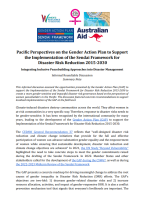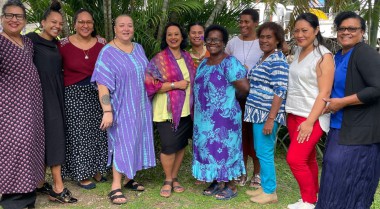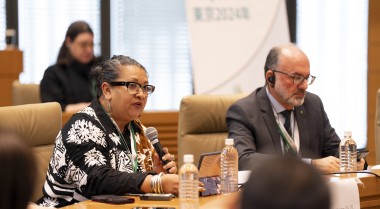
Pacific Perspectives on the Gender Action Plan to Support the Implementation of the Sendai Framework
The Gender Action Plan (GAP) within the Sendai Framework for Disaster Risk Reduction—a global agreement adopted in 2015 to reduce disaster risk and losses— aims to advance gender-transformative approaches to Disaster Risk Reduction and inclusive climate action. As local women peacebuilders from the Pacific contributed to the development of the GAP, they shared their insights on how to localise its implementation early on during CSW68.
Key recommendations to support the localised implementation of the GAP at the field level include:
- The implementation of the GAP must be coherent and complementary to other government efforts to implement commitments on climate, DRR, biodiversity, sexual and reproductive health rights (SRHR), Women, Peace and Security (WPS), and beyond.
- The governments and their partners need to recognise that it takes time to implement the GAP. The first step should be ensuring women's representation.
- The GAP implementation must be highly contextual. All governments cannot do the same things in the same way with the same capacity.
- All partners in the GAP implementation must be realistic about how much it will cost to implement it. Resources and political will are both required to take it forward. Donors need to be aware of the costs early to ensure that the action does not become projectized.



